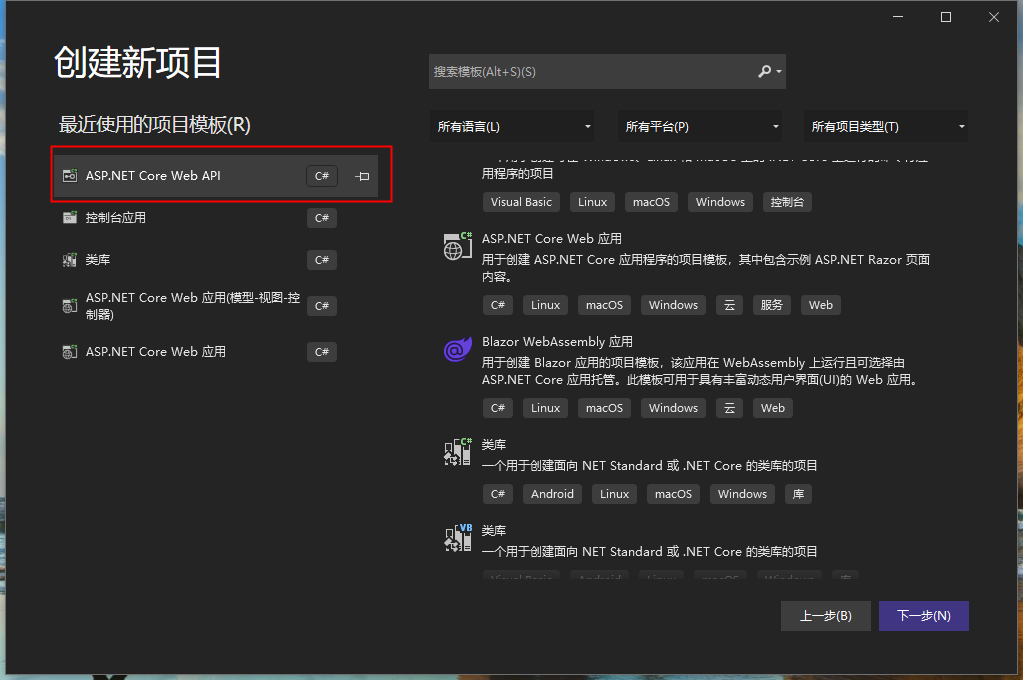当我的Razor视图调用@ Html.OpenIdSelector时(…我得到一个InvalidOperationException:
The current IHttpHandler is not one of
types: System.Web.UI.Page,
DotNetOpenAuth.IEmbeddedResourceRetrieval.
An embedded resource URL provider must
be set in your .config file.
我应该在配置文件中设置什么?
解决方法
只需
NuGet DotNetOpenAuth包.它将在配置文件中设置您需要的所有内容:
>在解决方案资源管理器中右键单击Web项目的引用
>添加库包参考…
>单击“在线”选项卡.
>在搜索框中键入dotnetopenauth
>单击“安装”
一切都将自动设置,正确的组件将从互联网上下载并作为参考添加.
以下是执行此操作后web.config文件的外观:
<?xml version="1.0" encoding="utf-8"?>
<!--
For more information on how to configure your ASP.NET application,please visit
http://go.microsoft.com/fwlink/?LinkId=152368
-->
<configuration>
<configSections>
<section name="uri" type="System.Configuration.UriSection,System,Version=2.0.0.0,Culture=neutral,PublicKeyToken=b77a5c561934e089" />
<section name="dotNetOpenAuth" type="DotNetOpenAuth.Configuration.DotNetOpenAuthSection" requirePermission="false" allowLocation="true" />
</configSections>
<connectionStrings>
<add name="ApplicationServices" connectionString="data source=.\SQLEXPRESS;Integrated Security=SSPI;AttachDBFilename=|DataDirectory|aspnetdb.mdf;User Instance=true" providerName="System.Data.SqlClient" />
</connectionStrings>
<appSettings>
<add key="ClientValidationEnabled" value="true" />
<add key="UnobtrusiveJavaScriptEnabled" value="true" />
</appSettings>
<system.web>
<compilation debug="true" targetFramework="4.0">
<assemblies>
<add assembly="System.Web.Abstractions,Version=4.0.0.0,PublicKeyToken=31BF3856AD364E35" />
<add assembly="System.Web.Helpers,Version=1.0.0.0,PublicKeyToken=31BF3856AD364E35" />
<add assembly="System.Web.Routing,PublicKeyToken=31BF3856AD364E35" />
<add assembly="System.Web.Mvc,Version=3.0.0.0,PublicKeyToken=31BF3856AD364E35" />
<add assembly="System.Web.WebPages,PublicKeyToken=31BF3856AD364E35" />
</assemblies>
</compilation>
<authentication mode="Forms">
<forms loginUrl="~/Account/LogOn" timeout="2880" />
</authentication>
<membership>
<providers>
<clear />
<add name="AspNetSqlMembershipProvider" type="System.Web.Security.SqlMembershipProvider" connectionStringName="ApplicationServices" enablePasswordRetrieval="false" enablePasswordReset="true" requiresQuestionAndAnswer="false" requiresUniqueEmail="false" maxInvalidPasswordAttempts="5" minRequiredPasswordLength="6" minRequiredNonalphanumericCharacters="0" passwordAttemptWindow="10" applicationName="/" />
</providers>
</membership>
<profile>
<providers>
<clear />
<add name="AspNetSqlProfileProvider" type="System.Web.Profile.SqlProfileProvider" connectionStringName="ApplicationServices" applicationName="/" />
</providers>
</profile>
<roleManager enabled="false">
<providers>
<clear />
<add name="AspNetSqlRoleProvider" type="System.Web.Security.SqlRoleProvider" connectionStringName="ApplicationServices" applicationName="/" />
<add name="AspNetWindowsTokenRoleProvider" type="System.Web.Security.WindowsTokenRoleProvider" applicationName="/" />
</providers>
</roleManager>
<pages>
<namespaces>
<add namespace="System.Web.Helpers" />
<add namespace="System.Web.Mvc" />
<add namespace="System.Web.Mvc.Ajax" />
<add namespace="System.Web.Mvc.Html" />
<add namespace="System.Web.Routing" />
<add namespace="System.Web.WebPages" />
</namespaces>
</pages>
</system.web>
<system.webServer>
<validation validateIntegratedModeConfiguration="false" />
<modules runAllManagedModulesForAllRequests="true" />
</system.webServer>
<runtime>
<assemblyBinding xmlns="urn:schemas-microsoft-com:asm.v1">
<dependentAssembly>
<assemblyIdentity name="System.Web.Mvc" publicKeyToken="31bf3856ad364e35" />
<bindingRedirect oldVersion="1.0.0.0-2.0.0.0" newVersion="3.0.0.0" />
<bindingRedirect oldVersion="1.0.0.0" newVersion="2.0.0.0" />
</dependentAssembly>
</assemblyBinding>
<legacyHMACWarning enabled="0" />
</runtime>
<uri>
<!-- The uri section is necessary to turn on .NET 3.5 support for IDN (international domain names),which is necessary for OpenID urls with unicode characters in the domain/host name.
It is also required to put the Uri class into RFC 3986 escaping mode,which OpenID and OAuth require. -->
<idn enabled="All" />
<iriParsing enabled="true" />
</uri>
<system.net>
<defaultProxy enabled="true" />
<settings>
<!-- This setting causes .NET to check certificate revocation lists (CRL)
before trusting HTTPS certificates. But this setting tends to not
be allowed in shared hosting environments. -->
<!--<servicePointManager checkCertificateRevocationList="true"/>-->
</settings>
</system.net>
<dotNetOpenAuth>
<!-- This is an optional configuration section where aspects of dotnetopenauth can be customized. -->
<!-- For a complete set of configuration options see http://www.dotnetopenauth.net/developers/code-snippets/configuration-options/ -->
<openid>
<relyingParty>
<security requireSsl="false" />
<behaviors>
<!-- The following OPTIONAL behavior allows RPs to use SREG only,but be compatible
with OPs that use Attribute Exchange (in various formats). -->
<add type="DotNetOpenAuth.OpenId.Behaviors.AXFetchAsSregTransform,DotNetOpenAuth" />
</behaviors>
</relyingParty>
</openid>
<messaging>
<untrustedWebRequest>
<whitelistHosts>
<!-- Uncomment to enable communication with localhost (should generally not activate in production!) -->
<!--<add name="localhost" />-->
</whitelistHosts>
</untrustedWebRequest>
</messaging>
<!-- Allow DotNetOpenAuth to publish usage statistics to library authors to improve the library. -->
<reporting enabled="true" />
</dotNetOpenAuth>
</configuration>
更新:
您可以实现自定义资源检索提供程序:
public class CustomResourceProvider : IEmbeddedResourceRetrieval
{
public Uri GetWebResourceUrl(Type someTypeInResourceAssembly,string manifestResourceName)
{
return new Uri("http://www.google.com");
}
}
然后在web.config中注册它:
<dotNetOpenAuth>
<webResourceUrlProvider type="AppName.CustomResourceProvider,AppName" />
...
</dotNetOpenAuth>
但我建议您使用openid-selector库生成登录表单.


